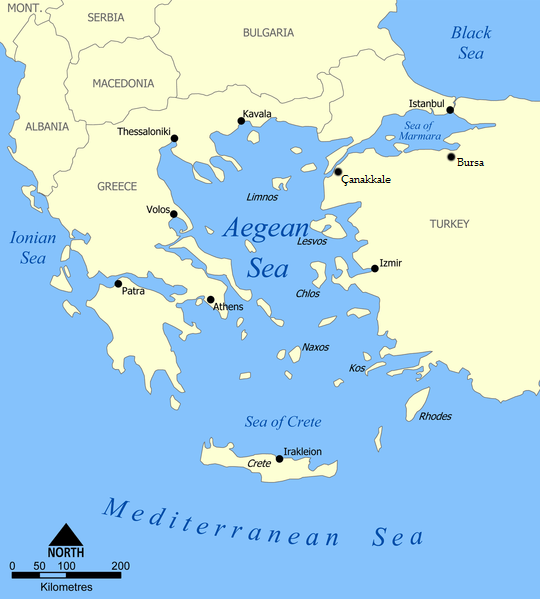IASbaba's Daily Current Affairs Analysis
Archives
(PRELIMS & MAINS Focus)
Syllabus
- Prelims – Environment
In News: Assam rhino estimation
Manas National Park – Stats
- The current rhino population in the park was estimated at 40
- The park’s rhinos have a male-female sex ratio of 1:1, arrived at without considering 10 calves and five sub-adults
- The one-horned rhinos in Manas National Park, have an age structure pyramid, indicating higher life expectancy and significant growth in the population.
- There is no wider representation of calves and sub-adults to sustain the population structure
- Population pyramid for calves is clearly an indicative of a low birth rate, but is also suggestive of a lower death rate, which means that there is higher life expectancy
- But such a population may suffer losses if not supplemented through translocations, the report warned.
- A suitable strategy to bring in more rhinos from other rhino-bearing areas is required so as to have a wider representation of calves and sub-adults over time, the report stated
Counting limitations
- “Total count” or direct count method adopted for the population estimation in Manas has a few limitations.
- A total count is generally used when a single species is targeted to be counted in a well-defined, specific area.
- This method assumes the detection probability to be one, which means that each and every animal has a 100% chance of being seen during the counting.
- The limitations of this method include undercounting, as the assumption of a detection probability of 1 is unrealistic, especially if the population closure cannot be established satisfactorily within a small area of 10-20 sq. km.
Manas National Park:
- Manas national park is a UNESCO World Heritage Site, a Project Tiger reserve, an elephant reserve and a biosphere reserve.
- It is located in the Himalayan foothills in Assam. It is contiguous with the Royal Manas National Park in Bhutan.
- The name of the park is originated from the Manas River.
- Significance: The Park is known for its rare and endangered endemic wildlife such as the Assam roofed turtle, hispid hare, golden langur and pygmy hog. It is also famous for its population of wild water buffalo.
- River: The Manas River flows through the west of the park. Manas is a major tributary of Brahmaputra river.
Previous Year Questions
Q.1) Among the following Tiger Reserves, which one has the largest area under “Critical Tiger Habitat”? (2020)
- Corbett
- Ranthambore
- Nagarjunsagar-Srisailam
- Sunderbans
Q.2) Which one of the following protected areas is well-known for the conservation of a sub-species of the Indian swamp deer (Barasingha) that thrives well on hard ground and is exclusively graminivorous? (2020)
- Kanha National Park
- Manas National Park
- Mudumalai Wildlife Sanctuary
- Tal Chhaper Wildlife Sanctuary
Source: The Hindu
Syllabus
- Prelims – Environment
- Mains – GS 3 (Environment)
In News: The Delhi Development Authority (DDA) is currently facing a shortage in land for compensatory afforestation.
- This issue of shortage of land for compensatory afforestation was raised by the agency in a letter to the Union Environment Ministry in March
- The DDA, in its letter to the Union Environment Ministry, cited paragraph 2.3 (v) of chapter 2 of the Handbook of Forest Conservation Act, which states: “In exceptional cases where non-forest land for CA is not available in the same State/UT in which the diversion of forest land is proposed, land for CA can be identified in any other State/UTs, preferably in neighboring State/UTs.”
Forest Conservation Act 1980
- Alarmed at India’s rapid deforestation and resulting environmental degradation, the Centre Government enacted the Forest (Conservation) Act in 1980.
- The Forest Conservation Act, 1980 stipulated that central permission is necessary to practice sustainable agro-forestry in forest areas. Violation or lack of permit was treated as a criminal offense.
- An Advisory Committee constituted under the Act advises the Centre on these approvals.
- The Act deals with the four categories of forests, namely reserved forests, village forests, protected forests, and private forests.
Features
- Section 2 of the act lists four criteria where permission of the Central Government is required for any action of State regarding –
- Declaring that any reserved forest ceases to be reserved.
- Use of forestland for non-forest purposes.
- Leasing forest to any private person.
- Declaring that any forest land may be cleared of trees that have grown naturally in that land, for the purpose of using it for reforestation.
- Removing self-regenerating forest for the creation of plantation is also the non-forest purpose.
- Under the act compensatory afforestation has to be carried out for the diversion of forest land, or deemed forest land, for non-forest purposes.
- Agencies carrying out development works are required to compensate for the loss of “land by land” and loss of “trees by trees”.
- The land for CA has to be free of encroachments and legal tussles
Source: The Hindu
Syllabus
- Prelims – Geography – Map based
In News: Turkish President Greece to demilitarise islands in the Aegean Sea
- Turkey says Greece has been building a military presence in violation of treaties that guarantee the unarmed status of the Aegean islands
- It argues the islands were ceded to Greece on the condition they remained demilitarised.
- Greece and Turkey are NATO allies, but the neighboring countries have a history of disputes over a range of issues, including mineral exploration in the eastern Mediterranean and rival claims in the Aegean Sea.
- Greece maintains Turkey has deliberately misinterpreted the treaties and says it has legal grounds to defend itself following hostile actions by Ankara, including a long-standing threat of war if Greece extended its territorial waters.
Aegean Sea
- It is an elongated embayment of the Mediterranean Sea between Europe and Asia.
- It is located between the Balkans and Anatolia, and covers an area of some 215,000 square kilometres.
- In the north, the Aegean is connected to the Marmara Sea and the Black Sea by the straits of the Dardanelles and the Bosphorus.
- The Aegean Islands are located within the sea and some bound it on its southern periphery

Aegean Islands
- The Aegean Islands are the group of islands in the Aegean Sea, with mainland Greece to the west and north and Turkey to the east; the island of Crete delimits the sea to the south, those of Rhodes, Karpathos and Kasos to the southeast.
- The vast majority of the Aegean Islands belong to Greece, being split among nine administrative regions.
- The only sizable possessions of Turkey in the Aegean Sea are Imbros and Tenedos in the northeastern part of the Sea. Various smaller islets off Turkey’s western coast are also under Turkish sovereignty.
The Aegean Islands are traditionally subdivided into seven groups, from north to south:
- Northeastern Aegean Islands
- Euboea
- Sporades (Northern Sporades)
- Cyclades
- Saronic Islands
- Dodecanese (Southern Sporades)
- Crete
Previous Year Questions
Q.1) Consider the following pairs: Sea-Bordering Country
- Adriatic Sea – Albania
- Black Sea – Croatia
- Caspian Sea – Kazakhstan
- Mediterranean Sea- Morocco
- Red Sea – Syria
Which of the pairs given above are correctly matched?
- 1, 2 and 4 only
- 1, 3 and 4 only
- 2 and 5 only
- 1, 2, 3, 4 and 5
Source: The Hindu
Syllabus
- Prelims – History – Current Affairs
Context: One of the first women to enter the male-dominated world of Carnatic percussion
Thirukokarnam Ranganayaki Ammal
- Born on May 28, 1910 she was the second of seven siblings.
- Her father Thirukokarnam Sivaraman was a renowned natuvanar, who was also known for his avadhana pallavis — an art of playing different talas by using both hands, legs and the head.
- Ranganayaki took to the mridangam and went under the guidance of the legendary Pudukottai Dakshinamurthi Pillai
- She was also well trained in Bharatanatyam

- She blazed a trail by playing complex mathematical combinations with ease.
- In the All India music conference held in 1927 in Madras Ranganayaki Ammal was the only woman among the 23 mridangam artistes who performed at the event.
- In the 1940s, she performed with several leading artistes such as Brinda and Muktha and Flute Mali.
- In 1966, she joined the Padmavati College in Tirupati as faculty, and later worked at the Sadguru Sangita Samajam in Madurai.
Source: The Hindu
Syllabus
- Prelims – Science and Technology
- Mains – GS 3 (Science and Technology)
Syllabus
- Prelims – Geography – Places in News
In News: British journalist and a Brazilian indigenous affairs expert recently went missing in a remote corner of the Amazon rainforest.
- The duo were last seen in Vale do Javari — the western section of the Brazilian Amazon named after the Javari river, which forms the country’s border with Peru.
Why is the region significant?
- The region where Phillips and Pereira went missing is spread over 85,444 sq km and, according to the Brazilian government, it is home to “the greatest concentration of isolated groups in the Amazon and the world”.
- The area is home to 14 different indigenous tribes with nearly 6,000 inhabitants. These tribes are known to reject contact with the outside world.
- But in spite of that there are repeated attempts to forcibly enter their resource-rich territory.
- Vale do Javari also forms part of an international cocaine trafficking route, with gold being exchanged for drugs and arms, consequently making it a hotspot for violent crimes.
- Besides the Javari it is transected by the Pardo, Quixito, Itaquai and Ituí rivers.
- The Brazilian government has made it illegal for non-indigenous people to enter the territory
Previous Year Questions
Q.1) Consider the following pairs: (2022)
Regions in News Country
- Anatolia – Turkey
- Amhara – Ethiopia
- Cabo Delgado – Spain
- Catalonia – Italy
How many pairs given above are correctly matched?
- Only one pair
- Only two pairs
- Only three pairs
- All four pairs
Source: Indian Express
Syllabus
- Prelims – Science and Technology
Context: In a study, astronomers have reported a fast radio burst (FRB) whose characteristics are different from almost all other FRBs previously detected, except one.
- FRBs are bright flashes of light that appear for a few milliseconds and then vanish. Since the first FRB was discovered in 2007, 140 more were discovered until June 2021
- The new study in Nature describes FRB 20190520B, first discovered in 2019, is idifferent is different from other FRBs, it emits frequent, repeating bursts of radio waves. And between bursts, it constantly emits weaker radio waves.
- Only one FRB has been previously observed to behave this way. Called FRB 121102, that was discovered in 2012.
- Calling the behaviour strange the US National Radio Astronomy Observatory (NRAO) stated that the discovery raises new questions about the nature of these mysterious objects and also about their usefulness as tools for studying the nature of intergalactic space.
What are Fast Radio Bursts?
- Fast Radio Bursts are brief (few millisecond) bursts of radio waves coming from far beyond our Milky Way galaxy.
- The phenomenon was first reported in 2007
- A defining property of these bursts is their dispersion the bursts produce a spectrum of radio waves, and as the waves travel through matter, they spread out or disperse with bursts at higher radio frequencies arriving at telescopes earlier than those at lower frequencies.
- This dispersion allows researchers to learn about two important things:
- They can measure this dispersion to learn about the stuff that radio bursts pass through as they travel toward Earth
- They can indirectly determine how far apart things are.
Origin of FRBs:
- FRBs have been spotted in various and distant parts of the universe, as well as in our own galaxy. Their origins are unknown and their appearance is highly unpredictable.
Previous Year Questions
Q.1) Which one of the following is a reason why astronomical distances are measured in light-years? (2021)
- Distances among stellar bodies do not change.
- Gravity of stellar bodies does not change.
- Light always travels in a straight line.
- Speed of light is always same.
Source: Indian Express
Syllabus
- Prelims – Environment
Context: The Union Environment Ministry stated that India is set to bring cheetahs from South Africa to Madhya Pradesh’s Kuno-Palpur National Park by August this year.
- The cheetah is the only large carnivore to have gone extinct in India, primarily due to hunting and habitat loss.
- Maharaja Ramanuj Pratap Singh Deo of Korea, Madhya Pradesh, is widely believed to have killed the last three recorded cheetahs in India in 1947.
- In 1952, the Indian government officially declared the Cheetah extinct in the country.
Extiction
Hunting with the cheetahs
- For centuries, hunting was a favoured activity for royalty in India.
- The cheetah, which was relatively easy to tame and less dangerous than tigers, was frequently used by Indian nobility for sport-hunting.
- The earliest available record for cheetahs being used for hunts in India, comes from the 12th century Sanskrit text Manasollasa, which was produced by the Kalyani Chalukya ruler, Someshvara III (reigned from 1127-1138 CE).
- Cheetah coursing, or the use of trained cheetahs for hunting, had become a highly specialized activity in the medieval period and was carried out on a large scale during the Mughal Empire.
- Emperor Akbar, who reigned from 1556-1605, was particularly fond of the activity and is recorded to have collected 9,000 cheetahs in total.
- The demand for cheetahs for hunting purposes was so high that specific areas, which had a high population, were designated for their capture, such as Rajasthan’s Jodhpur and Jhunjhunu, Punjab’s Bathinda and Haryana’s Hisar.
- The capture of wild cheetahs for hunting and the difficulty to breed them in captivity was leading to a decline in the cheetah population, even before the entry of the British.
Near extinction under the British Raj
- Unlike the Mughals, the British were not very interested in coursing with the cheetahs.
- Rather, they preferred to hunt big game, such as tigers, bison and elephants.
- While tigers were the choice animals for the British shikar, Indian and British “sport” hunters also targeted cheetahs.
- There is evidence to suggest that British officials considered the animal as “vermin” and also distributed monetary rewards for the killing of cheetahs from at least 1871 onwards.
- The rewards for bounty hunting likely caused the decline of cheetahs, as even the removal of a small number would have negatively affected the ability of wild cheetahs to reproduce even at the lowest level required for survival.
- As a result, wild cheetahs became very rare in India by the 20th century.
International trade of cheetahs
- Unlike the British, Indian elites and rulers of princely states continued the old practice of hunting with cheetahs in the 1920s.
- However, by this time it had become increasingly difficult to find cheetahs in the wild.
Cheetah
- The cheetah is one of the oldest of the big cat species, with ancestors that can be traced back more than five million years to the Miocene era.
- The cheetah is also the world’s fastest land mammal that lives in Africa and Asia
| Features | Asiatic Cheetah | African Cheetah |
| Physical Characteristics | Smaller and paler than the African cheetah. Has smaller head and a longer neck. Usually have red eyes and they have a more cat-like appearance. | Bigger in size as compared to Asiatic Cheetah.
|
| Image |  |
 |
| Distribution | Around 40-50 found only in Iran. | Around 6,500-7,000 African cheetahs present in the wild. |
| Status | IUNCN: Critically Endangered
CITES: Appendix-I of the List |
IUNCN: Vulnerable
CITES: Appendix-I of the List |
Previous Year Questions
Q.1) Consider the following statements: (2019)
- Asiatic lion is naturally found in India only.
- Double-humped camel is naturally found in India only.
- One-horned rhinoceros is naturally found in India only.
Which of the statements given above is/are correct?
- 1 only
- 2 only
- 1 and 3 only
- 1, 2 and 3
Source: Indian Express
Daily Practice MCQs
Q.1) Arrange the following water bodies from north to south
- Black Sea
- Sea of Marmara
- Aegean Sea
- Sea of Crete
Choose the correct code:
- 1-2-3-4
- 1-3-2-4
- 1-3-4-2
- 2-1-4-3
Q.2) Consider the following statements
- Forest Conservation Act, 1980 deals only with reserved forests and protected forests only
- Leasing forest to any private person under Forest Conservation Act requires Central Government permission
- The Act mandates the land for compensatory afforestation has to be free of encroachments and legal tussles
Choose the correct statements:
- 1 only
- 1 and 3
- 2 only
- 2 and 3
Q.3) Vale do Javari, the region recently in news is located in which of the following country?
- Spain
- Ecuador
- Brazil
- Myanmar
Comment the answers to the above questions in the comment section below!!
ANSWERS FOR ’10th JUNE 2022 – Daily Practice MCQs’ will be updated along with tomorrow’s Daily Current Affairs.
Baba’s Explainer – Uniform Civil Code

Syllabus
- GS-2: Indian Constitution—historical underpinnings, evolution, features, amendments, significant provisions and basic structure.
Context: Uttarakhand Chief Minister recently set up a committee to prepare a draft Uniform Civil Code (UCC) for the State.
- Assam chief minister recently said the uniform civil code will provide justice and relief to Muslim women.
- Himachal Pradesh chief minister has announced that the state will have its own uniform civil code.
- Goa chief minister held up the Goa Civil Code as the model that other states can emulate.
Read Complete Details on Uniform Civil Code
ANSWERS FOR 9th JUNE 2022 – Daily Practice MCQs
Q.1) – d
Q.2) – b
Q.3) – a














